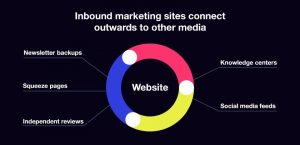Brands are intent on growing their presence on social media. By posting regularly and engaging with customers online, they increase customer loyalty and humanize their brand. For most, social serves as a channel for ensuring customer happiness and for growing their reach. While it’s indisputable that social channels should be used to connect directly with customers, digitally astute brands are expanding social from a customer service channel into a streamlined multi-channel shopping experience.
According to research by Forrester, U.S consumers will spend $ 327 billion online in 2016 and 74% of customers say that they rely on social media to guide their purchase decisions. Just as eCommerce is becoming more social, social is becoming more sales-centric. For brands struggling to monetize the social capital they have spent significant resources to build, the concept of social commerce is groundbreaking. It allows marketing teams to finally fully integrate social into their overarching strategy.
However, many digital marketers lack a basic understanding of what social commerce is and how it works. The premise is simple. Instead of trying to get consumers to leave their social media habitat to go to your ecommerce site — bring your site to them. Functional storefronts inside social networks make it easy to convert browsers into buyers.
But how do you create a successful social storefront? Similar to creating a premium eCommerce experience, there are best practices.
- Use Customer Photos
To insert your storefront into the social platforms your brand is active on, it’s important that your marketing blends in with the native content on the platform. This means displaying photos and videos that look similar to those created and shared by your followers’ peers. Better yet, use real customer photos and videos to market and sell.
- Post Consistently
This one may be obvious, but it requires the most effort: Post consistently! There is direct correlation between how often a brand posts and the rate of return visitors. It often takes multiple returns to turn a prospective customer into a customer. Don’t forget to allocate time to ‘Comment’ and ‘Like’ your fans’ posts and to monitor the conversation around your brand.
- Analyze Data
Collect key metrics, such as the number of likes, comments, and shares for each photo that your brand uses to market and sell on social media. Monitoring these numbers will help you to derive business insight into the types of content that resonate best with your followers. Invest in replicating the format of your strongest content, but don’t be afraid to test new creative.
In addition to following these best practices, brands need to decide which social networks to build their functional storefronts in. While in a perfect world, brands would allow followers to shop on every social channel, often times, limited resources will constrain brands into choosing one or two high-impact channels. How do you know which channels are most impactful for your brand? Choose the platform that’s demographics reflect those of your target buyer.

Now that you’re aware of social commerce best practices and have selected the correct platforms for your brand; here’s how to turn followers into buyers on Facebook, Instagram, Twitter, and Pinterest:
Brands like Illume Candles and Charlotte Russe are selling on Facebook by creating a Facebook page tab that allows users to access a shoppable gallery of photos. It’s an easy way for followers to browse products and buy in one click, directly on the social network. It’s also a great place to feature the highest quality photos from your social media marketing campaigns and engage with loyal customers.

Brands like Gaiam and Enerskin have turned Instagram into a shoppable storefront by dropping a URL in their brand Instagram bio that allows browsers to access a shoppable gallery of Instagram photos. A shoppable gallery that includes both brand and customer Instagram photos builds authentic brand equity with browsers – helping convert them into buyers. Shoppers who interact with customer photos on a brand channel are, on average, 2x more likely to make a purchase.

By re-tweeting customer photos and including a link to the featured product’s page, Ultimate Ears is driving more sales on Twitter. When browsers scroll through their newsfeed, the brand’s customer content blends into the photos tweeted out by their friends. This helps followers organically discover products and avoid feeling like they are heavily marketed to or spammed.

Uploading both brand and customer photos on Pinterest with a URL to the featured product’s page in the caption helps brands like Wantable drive sales from Pinterest. Pinterest is all about what customers do with your products post-purchase. It’s the perfect place to show followers how customers put your products to use. By uploading fan content and including a link to the featured product’s page, your brand will inspire browsers to buy on the spot.

Translating social media wealth into real revenue returns is an imperative that all brands will eventually adopt. Best practices will evolve and marketing teams will eventually have larger budgets to invest in creating social storefronts across all channels. But, for now, learn from the savvy few who have innovated their marketing to beat the social efforts of less nimble competitors.
Digital & Social Articles on Business 2 Community(23)






